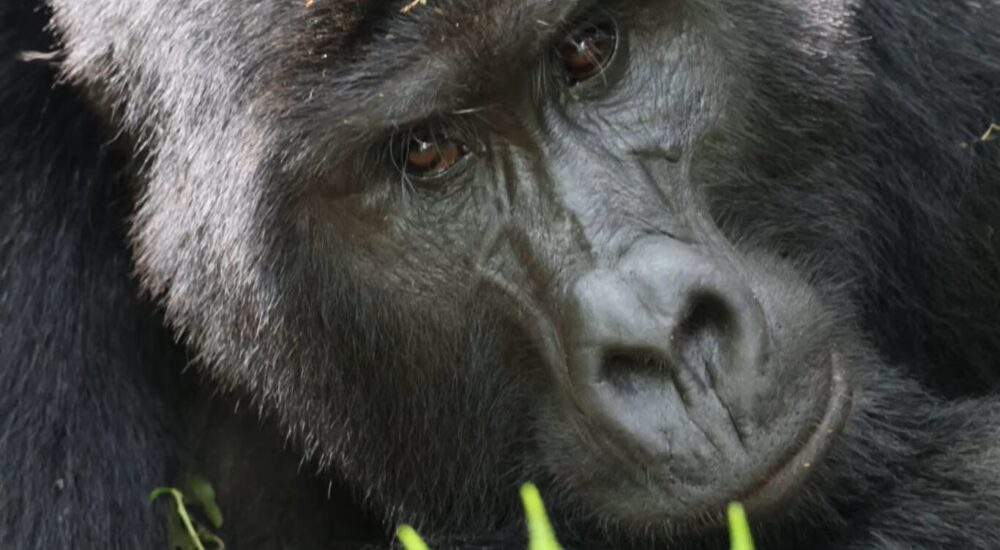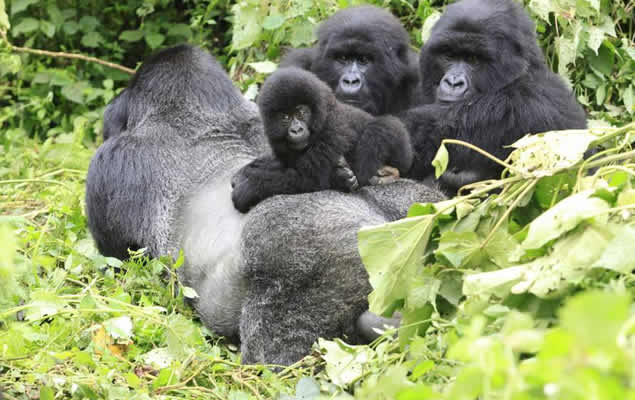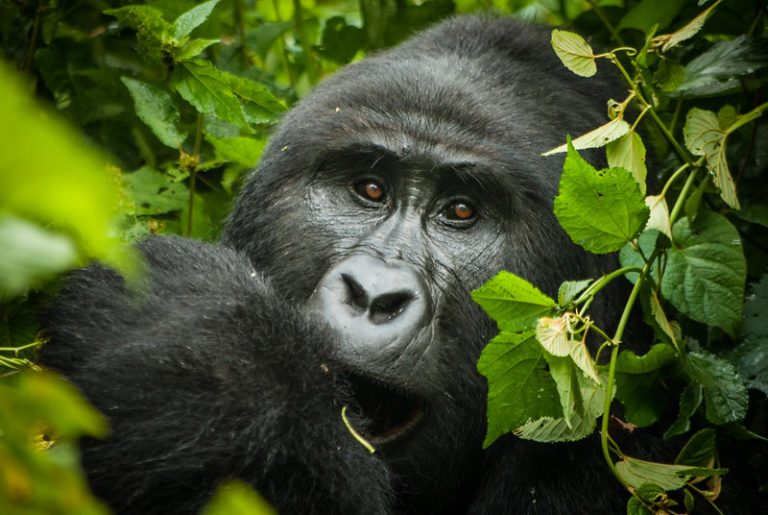What is Gorilla Trekking? Best Destinations for Family-Friendly Gorilla Trekking Preparing for Your Gorilla…
The Eastern Lowland Gorilla
The Eastern Lowland Gorilla, The Gorilla of the Eastern Lowlands. Lowlands in the east The kingdom of animalia is home to gorillas. Because of how much muscle they have compared to the rest of their body, they are the biggest and strongest apes in the world. They are also one of the smartest. The eastern gorilla has two types. These are the
The mountain gorilla lives in the mountain woods in Rwanda, the eastern Democratic Republic of the Congo, and the south western part of Uganda. There are two national parks in Uganda: Bwindi and Mgahinga Gorilla National Park. In Rwanda, Volcanoes National Park is where you can see mountain gorillas.
The only place in the world where you can find a Grauer’s gorilla is in the woods of the Albertine rift in the Eastern Democratic Republic of the Congo. They live in more than 11,900 km² of land and can go as fast as 450 km/h. Most of them live in the Eastern Democratic Republic of the Congo.
Where you can see the gorillas of the Eastern Lowland
Dr. Congo, Congo is home to eastern lowland gorillas. It is made up of Equatorial Guinea, Cameroon, Gabon, Angola, and the Central African Republic. National Parks like the DR Congo’s Kahuzi Beiga National Park People who want to see the Eastern lowland gorillas often go to Odzala in the Republic of Congo. In fact, because there are so many primates in the Democratic Republic of the Congo, three of the four types of gorilla can be tracked there.
The number of Eastern lowland gorillas has dropped a lot because of civil unrest, political unrest, illegal bush meat and poaching in the Democratic Republic of the Congo. As a result, there are now only about 5,000 gorillas left in the wild, making the species critically endangered.
Feel free to describe your monkeys.
Eastern lowland gorillas have a slightly bigger body than other types of gorillas. An adult silverback weighs about 210 kg and has big arms. They also have less hair. They are not as fluffy as mountain gorillas. The female, on the other hand, weighs about 76 kg (168 lb).
This is because the hair on adult men over 12 years old changes color from black to gray. They are called silverbacks. The average adult male weighs 210 kg, while the average adult female weighs 100 kg. They live 30 to 40 years, but in captivity, they can live up to 60 years.
The average silverback gorilla is the same size as twenty adult people. It can lift or throw up to 1796.77 lb (815 kg), which is more than twenty adults’ weight put together. One is 6.1 feet (1.85 meters) tall, and the other is 5.2 feet (1.6 meters) tall. When women are stressed, apocrine glands in their armpits give off a strong, unpleasant smell.
The way that Eastern Lowland Gorillas live
Family groups of eastern lowland gorillas live together because they are very social and friendly. But none of the local groups with less than 30 soldiers were called troops. There is a lot of inbreeding among the group. Each group has a strong boss who keeps everyone safe. Babies and toddlers are the names for young people.
A few older women and a few groups of male and female children are together. They have many different sounds, but most of the time they are quiet. You can make 16 different types of calls. To talk to each other, they bark, hoot, growl, scream, and sometimes laugh when they’re happy. How cute! Having them as pets is not possible, though. Eastern lowland gorillas often climb to the tops of trees to get food, while the younger ones hop from branch to branch to play. After being fed, they rest for most of the day. Gorillas in the Eastern Lowlands mate
What do Lowland Gorillas do to find a mate?
Eastern Lowland gorillas have more than one partner. The male who is in charge can mate with any female in the troop. Sometimes they only have one child, but in the Bwindi Forest, a female gave birth to twins after 8.5 months of pregnancy and paired all year, which is not common. The mother feeds the baby breast milk for a year. Girls are sexually ready at 10 years old, so boys have to wait until they are about 15 years old to mate with them.
Someone can get really beat up and thrown out of the group if a young man has sex without the Silverback’s approval. To the rest of the group, the Silverback is the boss, and everyone follows his orders.
What do gorillas in the Eastern Lowlands eat?
For food, Eastern Lowland Gorillas eat leaves and veggies. They eat both plants and animals, but their favorite kind of food is plant-based. Other fruits, leaves, roots, and bamboo shoots are what they eat. Eastern lowland gorillas, on the other hand, can eat banana roots. They break them apart to get to the healthy middle part of the tree. They also eat bugs like grasshoppers, ants, and termites. Termite nests are often broken into so they can eat the young termites. They can eat all day.
The Eastern Lowland Gorilla is no longer alive.
Eastern lowland gorillas are mostly in danger because of things people do, like hunting, mining, and illegal logging in the Congo Forest. Poachers kill them because other people want their bush meat so much. In the Eastern Democratic Republic of the Congo, the meat of miners, loggers, and people who had to leave their homes because of the civil war is highly valued by the locals.
About 300 Eastern lowland gorillas are being killed so that people who are hungry can eat. Poachers and gorillas are both in danger during the Congolese civil wars, where bandits fight in the woods and mines are located close to gorilla habitats. It is hard to do scientific study on the animals and keep track of them because of this.
In places where there is civil unrest, it is harder to police laws against poaching because people are afraid for their lives. But there is still hope thanks to groups like the United Nations, which has the largest peacekeeping force in the Democratic Republic of the Congo, and the World Wildlife Fund, which works with the Congolese wildlife authority to survey Kahuzi Beiga National Park and keep an eye on endangered species.
What would happen if there were no more gorillas?
Like most wild animals, gorillas play an important role in the places they live. The food chain will not be balanced if these huge gentle giants’ grazers don’t eat a lot of plants and destroy bamboo forests. More than that, people in the future will not be able to see these beautiful Eastern lowland gorillas. They also help trees grow by spreading the fruit and making room for small plants to grow.
If Eastern Lowland gorillas go extinct in African woods, it could start a cycle of extinction that gets worse and worse. It is possible that many other species that depend on trees for food or shelter would also go extinct at the same time as the native trees.
How can you keep Eastern Lowland Gorillas from going extinct?
Everyone should work to protect these rare gorillas in Africa, where they live in the wild. With the help of experts, trackers, and people who work to stop poaching, the mountain gorillas in Uganda and Rwanda and the Grauer’s gorillas in the Democratic Republic of the Congo need to be kept safe and cared for for a long time. Tourists who go gorilla climbing are the main source of money for the effort.
You should book a gorilla trekking tour because it helps protect gorillas and gives poachers another way to make money.
It is important to recycle your cell phone because the parts that are used to make them come from places where African gorillas live. Also, give to organizations that help protect gorillas, like Diana Fossey’s.


